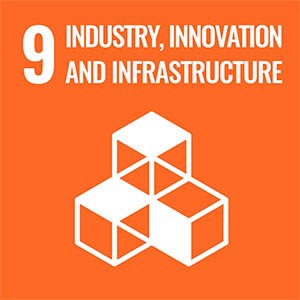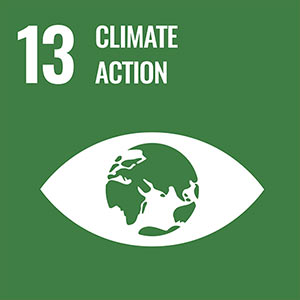MSc Electromagnetics, Fusion and Space Engineering
The master's programme in Electromagnetics, Fusion and Space Engineering combines a strong foundation in electrical engineering with knowledge of electromagnetic fields, how they interact with matter and how to utilise them in technology. Students specialise in Microwave Engineering, Photonics, Plasma or Space. As the programme covers both theoretical and applied aspects of the field, graduates face diverse career opportunities in industry and academia.
Electromagnetics, Fusion and Space Engineering at KTH
Electromagnetic fields are the basis of telecommunications. They are employed, for example, to transmit high-speed data through optic fibres or mobile wireless systems. Additionally, electromagnetic fields are transmitted from objects in the universe, such as stars, providing essential information to help us understand the universe. Furthermore, a fundamental understanding of electrodynamics and plasma physics is needed to control and generate fusion energy, which promises to power the Earth in the near future.
With these objectives in mind, the programme is built around four distinct focus areas. These four areas are defined as four specialisations with a common core of selected courses in plasma and electromagnetic theory.
- Microwave Engineering
- Photonics
- Plasma
- Space
The academic year is divided into four study periods, and there are typically 2–3 courses each period. The first two periods consist of mandatory courses for all students. In the next four periods, all students take mandatory and elective courses in their chosen specialisation. The last two periods consist of a master's degree project, which can be conducted in collaboration with the local or international industry.
All the courses are in English, and the programme is set in an international environment, with students from many nationalities. The variety of pedagogical methods offers opportunities to develop group communication skills and gain experience working on mixed teams. Research and industrialisation in communications, space and fusion is developed in international environments. KTH leads several projects with national and international industry in satellite and ground communications, as well as in space missions within NASA and the European Space Agency (ESA), as well as the fusion reactor at ITER (International Thermonuclear Experimental Reactor).
This is a two-year programme (120 ECTS credits) given in English. Graduates are awarded the degree of Master of Science. The programme is given mainly at KTH Campus in Stockholm by the School of Electrical Engineering and Computer Science.
Participate in the research
There are plenty of opportunities to participate in the research and project work at the divisions hosting the programme. For example, these divisions offer project courses to work in non-scheduled time that can be transferred into conventional course credits. These projects are related to the new generation of satellite and ground communication systems (6G), automotive radars, fusion reactors, and space missions.
Master's degree project
The degree project carried out in the final semester can be undertaken at KTH or in industry. In some cases, parts or the whole project can be completed abroad. Industry-oriented projects offer the possibility of joining Swedish or international companies after the master’s thesis. In research-oriented projects, part of the work is often aimed at publication in reputed peer-reviewed journals, providing opportunities to pursue PhD studies at KTH or other top universities or research centres.
Examples of degree projects made by former students:
- Numerical study of spectral densities of fluctuations in thermal plasma
- Graphene growth on SiC under Arambient and H-intercalation
- Efficient computation of the near-field mutual coupling between antennas on vehicles
- Ka-band 2D Luneburg Lens design with a glide-symmetric metasurface
- Analysis of the electric and magnetic fields' time variation inside the auroral oval region
- Modelling of collisionless alpha-particle confinement in Tokamaks
Courses in the programme
The courses in the programme cover topics such as electromagnetism, fusion, space engineering, antennas, microwave devices, THz circuitry, photonics, plasma.
Courses in the programme Electromagnetics, Fusion and Space Engineering
Future and career
Emphasis is placed on the field's theoretical and applied aspects with a multidisciplinary approach and proximity to real research applications – with many master's degree projects completed in international collaborations. The master's programme in Electromagnetics, Fusion and Space Engineering offers you a unique breadth of experience with a multitude of career prospects following your degree. After graduation, you can work in various fields as a Telecommunications Engineer, Microwave Engineer, Space Engineer, Fusion Reactor Designer, Radiofrequency Designer or Researcher on Electromagnetics.
The knowledge acquired in this master's programme sets the foundation for working in the development of electromagnetic technology and hardware. For example, this technology is commonly used in communication systems and many of our students have been employed by large companies such as Ericsson, and numerous small companies and start-ups, to design antennas, microwave circuits and filters. Another common career path after their studies has been in the aerospace industry as electromagnetic engineers for companies like SAAB.
KTH has an international reputation in plasma physics and has been the home of Hannes Alfvén, a pioneer in the field and Nobel Prize laureate. Today, the university is active in several aspects of the development of ITER, from plasma modelling to engineering material facing the plasma. Space research at KTH is carried out in both large international projects under ESA and NASA and in smaller collaborations with leading research centres and universities around Europe, the USA, South Africa and Japan.
Sustainable development
Graduates from KTH have the knowledge and tools for moving society in a more sustainable direction, as sustainable development is an integral part of all programmes. The three key sustainable development goals addressed by the master's programme in Electromagnetics, Fusion and Space Engineering are:



On completing the programme, graduates are equipped with the skills to contribute to creating more sustainable cities. For example, you will learn how to produce efficient electromagnetic devices which can be used to produce driverless cars and to better control the traffic in our cities, thus reducing our environmental impact.
Graduates will contribute to the development of our industry and infrastructure. For example, electromagnetics is the basis for any communication system. Guided media, such as fibre optics and antennas, are required to transfer data from and to our computers or phones. New communication systems will contribute to developing more efficient infrastructures that are also more environmentally friendly.
Upon completing this programme, graduates can help to decrease climate change. For example, students will learn about the recent advances in fusion and solar energies, two potential solutions for reducing the carbon emissions causing global warming.
Faculty and research
The programme in Electromagnetics, Fusion and Space Engineering is given by the School of Electrical Engineering and Computer Science at KTH. The field of Electrical Engineering at KTH is currently ranked 23 in the world by QS 2024. Faculty from the Divisions of Electromagnetic Engineering and Fusion Science, Micro and Nanosystems, and Space and Plasma Physics is teaching courses within this programme.
Faculty involved in the programme
Lab facilities


Research stories










